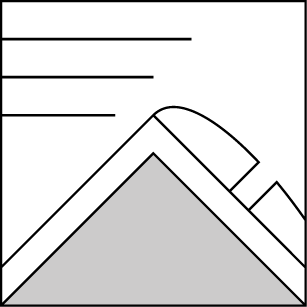Basic Information
Observation Details
Observation Date:
February 25, 2023Submitted:
February 25, 2023Observer:
SAC - Jon PreussZone or Region:
Galena Summit and Eastern MtnsLocation:
Baker Creek (All aspects; 6800-9700')Signs of Unstable Snow
Recent Avalanches?
YesCracking?
None ExperiencedCollapsing?
IsolatedBottom Line
Today's observations continue to align with the current forecasted problems. Slopes steeper than 35 degrees in wind-affected areas appear as a wind problem that overlies facets and sometimes has the presence of a crust with them. The key ingredient appears to be wind-loaded start zones, with a thick enough slab to be reactive.
Media/Attachments


Advanced Information
Weather Summary
Cloud Cover:
Mostly SunnyWind:
CalmNew/Recent Snowfall:
Storm totals were 7-10” from Baker Lake trailhead into the upper elevations.Today the skies were mostly sunny with a few clouds. The mountain temperatures felt much warmer, and the solar input was considerably warming the snow. Winds remained calm for much of the day, with an occasional breeze from the south.
Avalanche Observations
The Boulder mountains had many sun-influenced loose avalanches from Easley to Boulder Peak and none of which appeared to be bigger than D1.5. They all started out in very steep, rocky terrain facing the sun.
Snowpack Observations
I dug one snow pit on a SE facing slope at 7800'. Several crust layers with facets make up the upper 1.5 feet of the snowpack. The extended column tests produced propagating results (ECTP3,6,10) on each one. They all looked terrible equally and might indicate the stability to come if forecasted storms bring more snow on top of those layers. Everything below these layers looked strong and had percolation columns in the lower snowpack. Today's strong solar input was building another crust to the surface.
A north-facing, sheltered snow pit at 9000' showed a relatively strong snowpack, and stability tests produced no alarming results. The two layers of concern were the new/old interface, where a thin layer of facets exists and a thicker layer of facets down 40cm.
I observed 3-5mm surface hoar that formed over night and was located standing up at the upper elevations in this area. The sun had already burned off anything that faced south, but left it's presence on the north facing slopes.
Avalanche Problems
| Problem | Location | Distribution | Sensitivity | Size | Comments |
|---|---|---|---|---|---|
 Wind Slab
Wind Slab
|
|
Layer Depth/Date: 1-2' Comments: Rose shading for observed terrain today. |
Many snowmobilers were out today dipping into alpine avalanche terrain. Most of the tracks I could see avoided start zones, which aligns with the current problem associated with wind-affected steeper terrain.
Terrain Use
Solo travel. I avoided skiing in avalanche terrain but would feel comfortable entering steeper terrain with a partner, where it wasn't recently wind-loaded.
